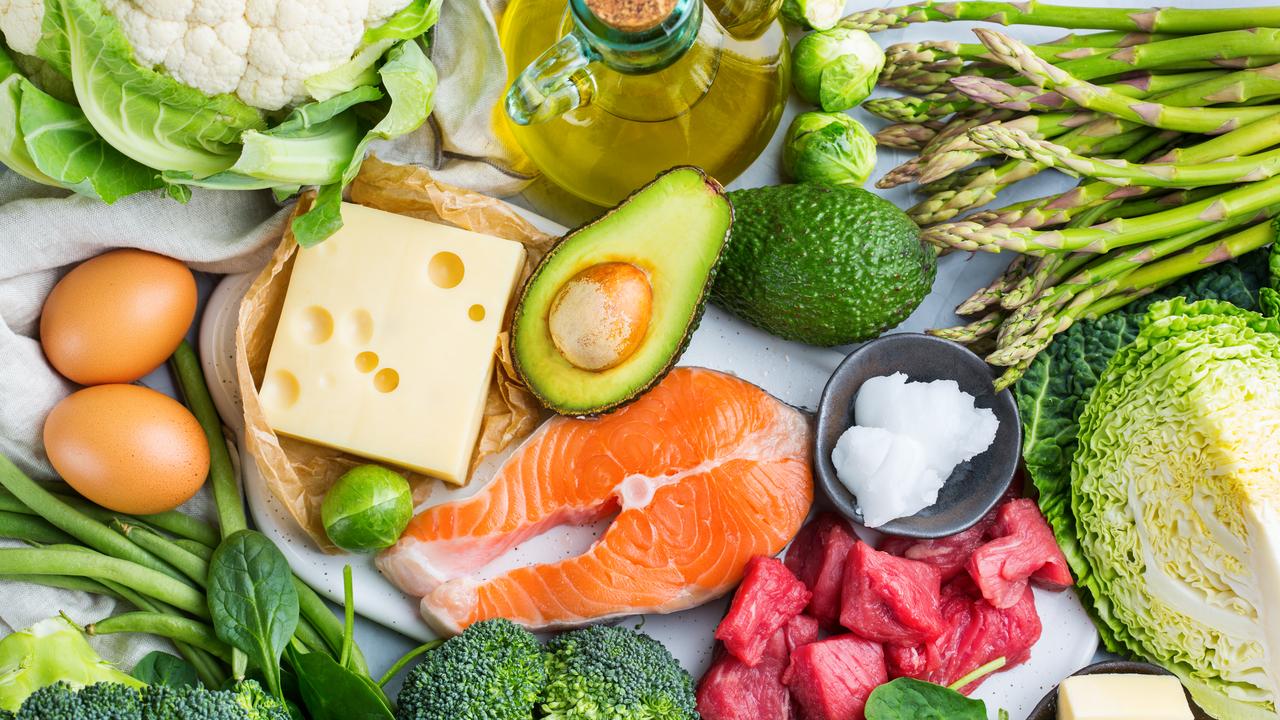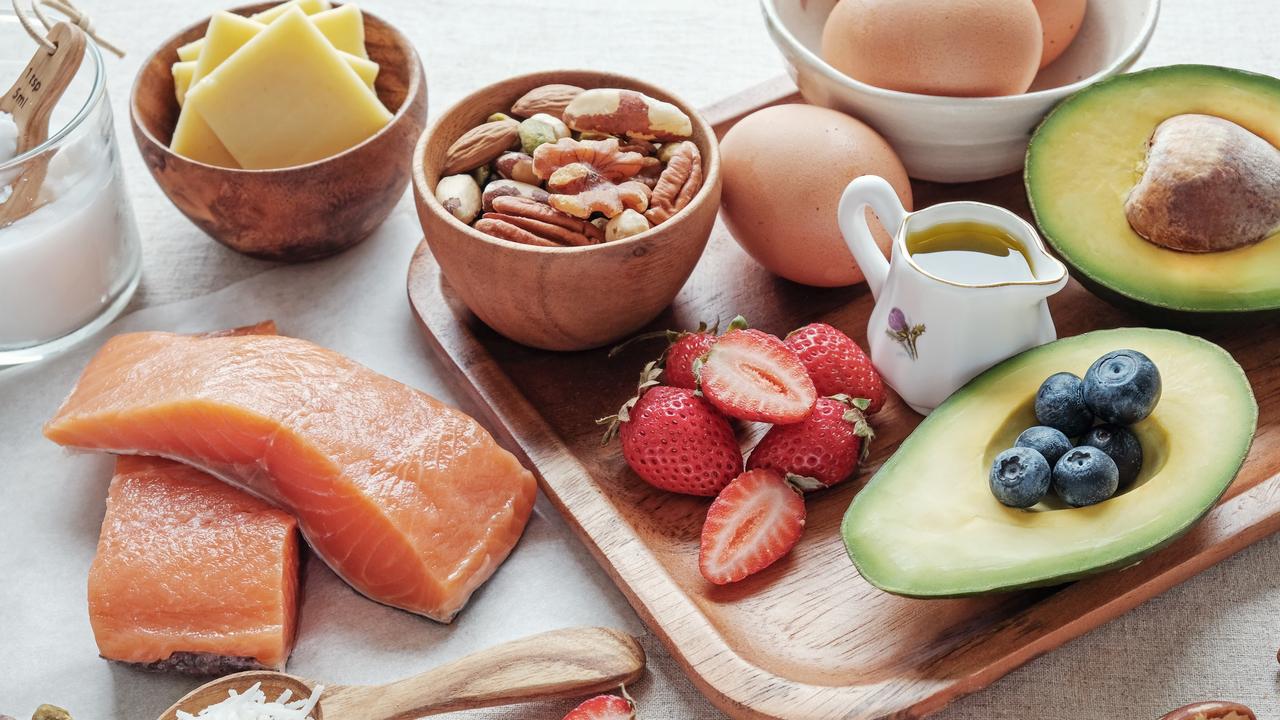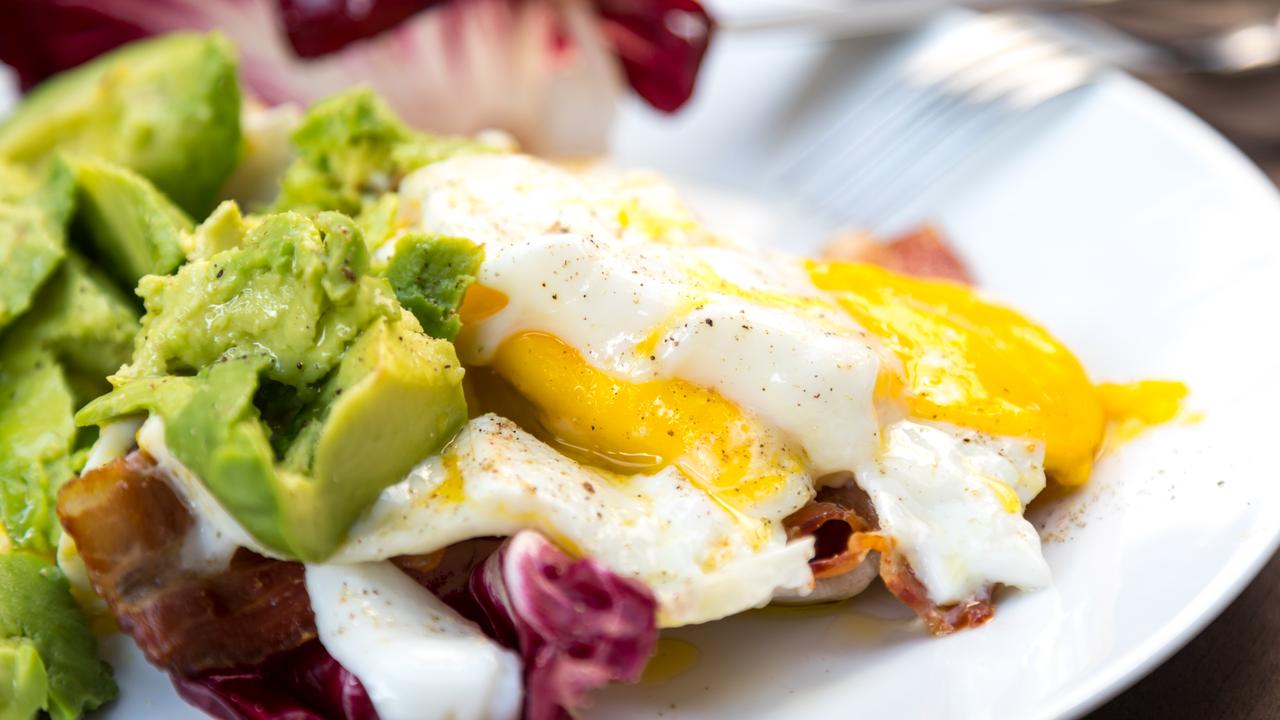Everything you need to know about the keto diet
Just like fashion, nutrition trends tend to come in waves, but why has the keto diet gained so much popularity over the decade.

The low-carbohydrate, high-fat ketogenic (or “keto) diet continues to rise in popularity with loads of people trying the fad as a weight-loss solution.
It has even attracted the likes of celebrities Gwyneth Paltrow, Kourtney Kardashian and Jenna Jameson who swear by its fat-cutting benefits.
WHAT IS THE KETO DIET?
Essentially, the keto diet is a way to cut back on carbohydrates (usually to 50 grams a day or less) to help the body achieve a state of ketosis, in which it has to burn fat (rather than sugar) for energy.
According to Brooke Turner, an Australian nutritionist, exercise scientist and personal trainer, when your body shifts to ketosis it lowers blood sugar and insulin levels and shifts the
body’s metabolism away from carbs as a fuel source.
“Your liver starts producing high numbers of ketones to supply energy for your brain — the result being that you burn fat and use ketones for energy (compared to glucose on a normal carb intake diet),” Ms Turner told news.com.au
She explained that the keto diet can often be mistaken with and misrepresented as low carb diets — many people will claim that they are “keto”, when in fact they may be following a low carb, high fat.
RELATED: Women and men complain of bad smell, and it’s all because of the keto diet

WHAT MAKES IT A POPULAR DIET?
Just like fashion, nutrition trends tend to come in waves.
James Kuhn, an accredited Australian practising nutritionist and expert for Body Science said its simplicity has a lot to do with attracting people to give it a go.
“A ketogenic diet is relatively simple — you focus on cutting out non-fibrous forms of carbs and consume mostly minimally processed foods, sufficient protein, and a moderate amount of healthy fats. That’s it.”
“The ketogenic diet has been around since at least the 1920s when D. Wilder created a ketogenic diet for children with epilepsy
“Since then we’ve seen it have a resurgence every couple of decades when a new form of the diet is released.”
PROS OF KETO DIET:
Mr Kuhn said there are a number of benefits to the ketogenic diet.
“A well constructed keto diet is rich in minimally processed foods. Like all well-constructed diets, it’s built on a foundation of nutrient dense whole foods such as nuts, seeds, fibrous vegetables, proteins and healthy fats,” he told news.com.au
He said it also forces you to cut out the majority of hyper-palatable, sugar-rich, “junk” type
foods.
“Considering the high amounts of calories the average Australian adult sources from
these types of foods, just switching to a keto diet will have marked health benefits including reduced total and LDL cholesterol, increased HDL cholesterol and reduced blood pressure.”
He said perhaps one of the biggest benefits is that ketones and ketogenic diets help manage hunger.
“A systematic review by researchers from the The Boden Institute of Obesity in Sydney found
that individuals were less hungry and exhibited greater fullness/satiety while adhering to
ketogenic diets and had a reduced desire to eat.”

KEY BENEFITS:
Ms Turner has provided a breakdown on some of the key benefits.
Weight loss — rapid fat loss occurs when you start a ketogenic diet and severely
restrict carbs, which is great if weight loss is your aim. keto diets also improve
triglyceride and HDL cholesterol levels.
Reduced hunger — it can significantly reduce appetite and hunger. If you feel full and
don’t need to eat as often as before — this is a good sign that you may be in ketosis.
Improved brain function — ketones are an extremely potent fuel source for your
brain. This translates to improved memory and sharper cognitive function.
Increased and stable energy levels — for long term keto lovers. Initially fatigue is a
common symptom.
CONS OF KETO DIET:
While there does appear to be many people who have achieved great success following a ketogenic diet — such as Kourtney Kardashian who recently attributed her fit figure to the diet — Mr Kuhn says the science, however, shows that it’s prone to the same adherence drop-off that most diets are susceptible to.
He said trials show ketone levels dropping and carbohydrate intake increasing over time.
“For starters, it’s relatively restrictive. Any time a diet requires you to cut out a specific food or whole food group, it’s going to affect adherence in some individuals,” he said.
“Any diet that cuts out a food group is also essentially making it harder to get adequate amounts of nutrients. While not impossible, it does mean that individuals following a ketogenic diet may have to invest more energy into ensuring that they’re meeting their micronutrient needs.”
Also — because you are consuming a huge amount of animal proteins and dairy, it can change your gut microbiome (gut flora), which is essential to your health.
Sydney-based exercise physiologist Drew Harrisberg quit the keto diet after four months, claiming it was an unsustainable and unsafe diet.

He experienced gut issues and claimed that while the short-term results are appealing because you do lose fat and may look good — the diet is shortsighted.
“On the diet, it changes your gut ecology to far less favourable bacteria and this in turn will change your gut and affect things like your skin and ‘down there’ for the ladies,” Mr Harrisberg told news.com.au
Ms Turner said people could often suffer from tiredness, fatigue and be generally low in energy — commonly referred to as the “keto flu” due to very low levels of carbohydrates.
“Once your body becomes adapted to running on fat and ketones this will pass, but initially it can be hard,” she said.
DOWNSIDES OF KETO DIET:
Ms Turner has provided a breakdown on some of the major downsides of the diet.
Fatigue — low energy also translates to decreased performance which you’ll notice a
difference in your workouts and trainings in the initial transition period.
Poor sleep and insomnia — are also common symptoms during the initial stages of ketosis.
Constipation, diarrhoea and digestive issues — it is important to be mindful of different foods that may be causing digestive issues.
Bad breath — a common side effect due to elevated ketone levels (also a good sign that you
are in ketosis). The specific culprit is acetone, a ketone that exits the body in your urine and
breath — leaving is bad or fruity smelling.
HOW SHOULD A NEWBIE APPROACH THE KETO DIET:
Like any diet, a ketogenic diet can be constructed in a way that promotes health or in a way that detracts from it.
However, the major focus should still be nutrient density and ensuring that the majority of your intake is from minimally processed foods, says Mr Kuhn.
“The ketogenic diet offers a different possible solution. Add fat loss, the promise of bacon and reduced hunger, and you can see the appeal for many individuals.
“I think people can often get caught up in the dream of having unlimited amounts of butter, bacon and cream without hindering their health. This just isn’t the case, and it’s still very possible to gain weight and see health problems when this approach is taken.”
Mr Kuhn said for those starting a ketogenic diet, the focus should be on reducing the amount of starchy carbohydrates such as rice, potato, pasta, bread and “junk”.
“There then should be a focus on increasing the amount of fibrous vegetables and whole food fat sources such as nuts, seeds, avocado, olives, salmon, and mackerel.”
Ms Turner said it was important to do your research and understand why you want to follow this way of eating, before starting the diet.

“Consider your lifestyle, training habits and personal factors (underlying health conditions, family life, exercise habits, breastfeeding),” she advised.
Both nutritionist said it was also worth adding an electrolyte supplement to your diet to help counter the “keto flu” which was often partially caused by increased losses of electrolytes when starting a ketogenic diet.
“Electrolytes are often lost because of the rapid reduction in your body’s water content and the elimination of processed foods that may contain added salt,” Ms Turner explained.
“Taking electrolytes and supplementing can help to maintain this balance as well as reduced
levels of fatigue. Try adding 2000 to 4000 mg of sodium, 1000 mg of potassium and 300mg of magnesium per day to minimise side effects and be sure to stay well hydrated daily.”
TYPICAL KETO DIET CAN LOOK LIKE:
Breakfast: Eggs, avocado, and smoked salmon with mushrooms and baby spinach
Lunch: A large Greek salad including full fat feta, extra virgin olive oil and a protein such as chicken, tinned mackerel/sardines or beef.
Snack: May include full fat Greek yoghurt, some berries and topped with some nuts and seeds.
Dinner: might look like a protein source such as steak, chicken breast or thigh, pork or salmon with fibrous greens, olive oil/butter/avocado and some kimchi/sauerkraut on the side.
DO YOU NEED TO DO SPECIFIC TRAINING:
“Realistically, any movement apart from typing on your keyboard and swivelling on your office chair is going to be positive,” Mr Kuhn said.
“Resistance training should always be a priority when dieting. It’s your best safeguard against muscle loss regardless of the diet you choose.”




